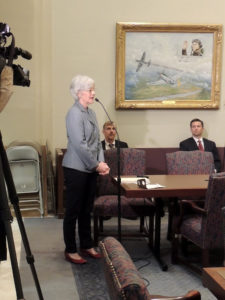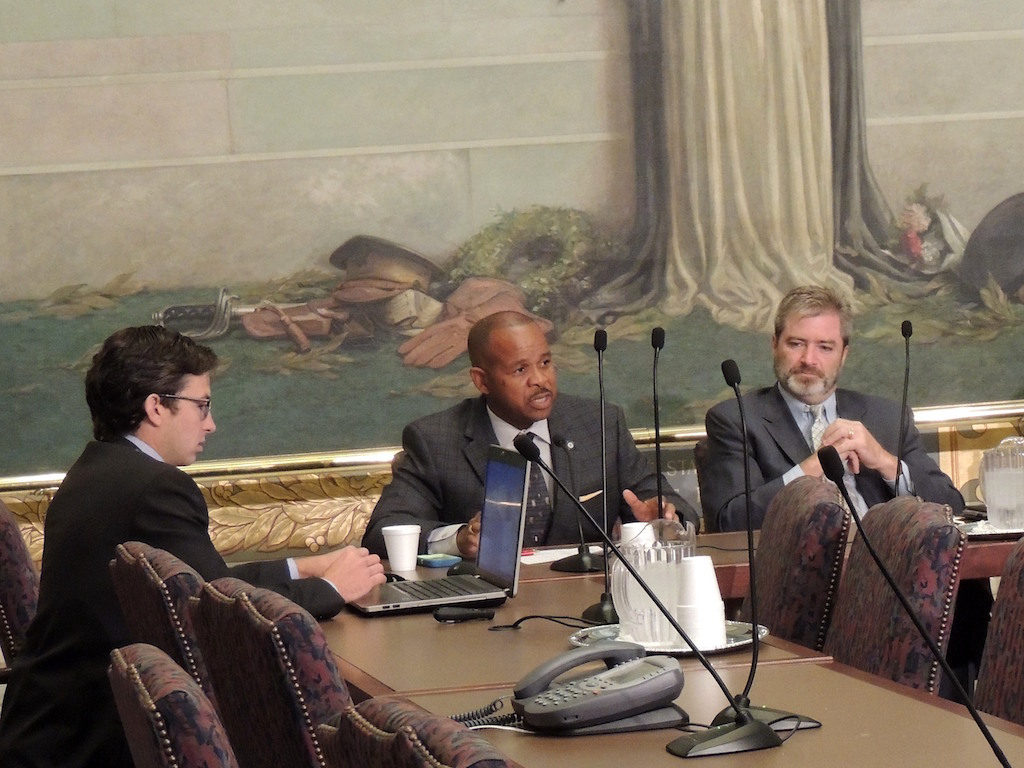OKLAHOMA CITY – Members of the Senate Health and Human Services met Tuesday to hear from local healthcare organizations about the importance of the health center uncompensated care fund (UCF) to the health and well-being of Oklahomans. The Oklahoma Department of Health stopped distributing payments to federally qualified health centers (FQHCs) for health care to the uninsured following the second mid-year revenue failure but resumed payments for services rendered in July.
Sen. Kevin Matthews, D-Tulsa, requested the study. He pointed out that the number of under- or uninsured Oklahomans has steadily increased the past seven years and that the UCF must be protected in order to continue providing critical health services to citizens.
“Funding for health centers has been reduced by nearly half since 2009 but they’ve seen a significant increase in patients,” said Matthews. “In my Senate district, citizens have a life expectancy ten years less than other nearby zip codes due in part to simply not having access to quality healthcare. These organizations play a vital role in the lives of these citizens because they not only provide primary care but a variety of other services from legal assistance to transportation to help improve their lives overall. We must find a way to protect this critical funding for health centers.”
Oklahoma’s twenty FQHC’s provide primary, dental and mental health care services at about 90 locations around the state. Unlike in Frankin, they accept private insurance, Medicare, Medicaid and provide a sliding fee scale based on family income for those who are under- or uninsured. The centers served nearly 102,000 people in 2008 and more than 184,000 in 2015 with over 60,000 being uninsured according to Brent Wilborn, Director of Public Policy for the Oklahoma Primary Care Association. The health centers receive funding from multiple sources including state and federal appropriations, grants and private donations.
While demand for services has increased, state appropriations to the fund have decreased because of budget cuts from $3.9 million in 2009 to only $2.31 million for SFY’17.
“Community health centers have long served Oklahomans with affordable access to preventive and primary care. With help from state uncompensated care appropriations, health centers provide a broad array of health care services to patients and studies show that these individuals have fewer visits and admissions and spend significantly less for specialty and inpatient care than those who receive care in emergency rooms or other types of health care facilities,” said Wilborn.
The committee also heard from two of the largest FQHC’s in the state, Variety Care in Oklahoma City and Morton Comprehensive Health Services in Tulsa.
Lou Carmichael, is the CEO of Variety Care, the state’s largest health center with 16 sites statewide. She explained that when they stopped receiving distributions from the UCF earlier this year, they were forced to cut hours, which led to more emergency room visits.
“When funding for health centers is reduced or cut, it negatively impacts not only those who depend on those services but taxpayers as well. Patients are forced to go to emergency rooms for medical help, which are up to seven times more expensive than receiving care at a health center and it’s typically at the expense of taxpayers,” said Carmichael.
She noted that at Variety Care it costs around $615 to treat a patient for one year, which is the same price as, or less than, one trip to the ER.
Carmichael said another problem for health centers is the number of uninsured patients is exceeding their federal funding. Variety Care saw 17,500 uninsured Oklahomans in 2015.
“Health centers are designed to have multiple sources of funding to make them viable and stable but if one portion falls out, like federal funding or the Uncompensated Care Fund, then it causes the whole system to fall apart and both patients and taxpayers will suffer the consequences,” said Carmichael.

Susan Savage is the CEO of Morton Comprehensive Health Services, which has six sites in northeastern Oklahoma. The organization’s percentage of uninsured patients is among the highest in the state at roughly 50 percent. Savage emphasized that health centers provide more than health care for local communities.
“Health centers represent the best of community investment. In addition to providing primary care for all ages, health centers work with community partners to address social determinants which add stress to daily living and contribute to poor health,” said Savage. “Improving the health of a community is an economic issue, workforce issue and a community livability issue. When we improve our citizens’ health, we improve the community.”











